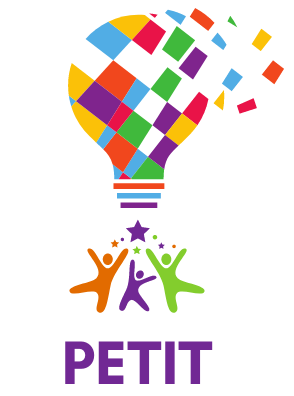The neuromechanical basis of kinesiology is a field that explores how the structure of the human body (muscles, bones and joints) and the central nervous system (CNS) interact to produce movement. Understanding this relationship is crucial for coaches working with children and young people in order to promote their physical and motor development and prevent potential injuries.
1. Human Biology and Movement
Human movement involves a complex interplay of muscles, bones, and joints working together to create force, produce motion, and maintain balance. At a basic level, the musculoskeletal system serves as the framework for movement:
- Bones provide structure, support, and protection to vital organs.
- Muscles generate force by contracting and pulling on bones, allowing movement at the joints.
- Joints act as pivot points, where two or more bones connect and enable movement.
Muscle contractions can either be concentric (shortening the muscle, like lifting a weight), eccentric (lengthening the muscle under tension, like lowering a weight),eccentric-concentric or isometric (muscle tension without changing length, like holding a pose). These contractions are coordinated and controlled to produce the various forms of movement we see in everyday activities, sports, and physical exercise.
2. Central Nervous System (CNS) and Motor Control
The central nervous system, which consists of the brain and spinal cord, plays a crucial role in initiating and coordinating movement. The CNS receives sensory information from the body and environment, processes this information, and sends signals to muscles to produce desired movements. This system is organised as follows:
- Motor Cortex: Located in the brain, the motor cortex initiates voluntary movements. It sends signals through the spinal cord to the appropriate muscles.
- Cerebellum: This part of the brain fine-tunes motor commands, ensuring smooth and coordinated movement. It plays a key role in balance and timing.
- Spinal Cord: The spinal cord acts as a communication pathway, transmitting signals between the brain and muscles. It also processes some reflexive movements without the brain’s direct involvement.
Motor neurons are specialised nerve cells that carry signals from the CNS to the muscles, instructing them to contract or relax. These neurons operate in motor units, which include a single motor neuron and the muscle fibers it controls. The size and number of motor units involved in a movement affect its precision and strength. For example, fine movements, like writing, use smaller motor units, whereas large movements, like jumping, use larger motor units.
3. Control of Movement by the CNS
To control movement, the CNS relies on a feedback system. Sensory receptors in muscles, tendons, and joints provide information about body position (proprioception), muscle tension, and movement velocity:
- Proprioceptors in muscles and tendons detect changes in muscle length and tension, allowing the body to adjust positions and movements.
- Vestibular system in the inner ear senses balance and spatial orientation, helping maintain stability.
The CNS processes this sensory feedback and adjusts motor commands accordingly, enabling smooth and accurate movement. This loop of feedback and adjustment is essential for tasks like balancing on one foot, catching a ball, or running.
The central nervous system (CNS)—comprising the brain and spinal cord—is at the heart of motor skill development, controlling and coordinating movement. Development of the CNS begins in the womb and continues throughout early childhood, making this period a prime time for learning motor skills. Early in development, the brain undergoes synaptogenesis, where neurons form thousands of connections, or synapses. During the first few years, children are particularly responsive to sensory and motor experiences. These experiences stimulate the formation of connections in the motor cortex, the cerebellum, and other parts of the brain responsible for controlling and refining movement.
Myelination is another critical aspect of CNS development. Myelin is a fatty sheath that forms around nerve fibres, insulating them and significantly increasing the speed of nerve transmission. As children grow, myelination progresses in areas of the brain related to motor function, enhancing the speed and efficiency of signal transmission between the brain and muscles. This myelination process enables children to perform movements with greater control and coordination as they age.
Another vital component is neuroplasticity, or the brain’s ability to reorganise itself in response to learning and experience. In children, neuroplasticity is particularly high, meaning their brains can easily adapt to new motor patterns and experiences. This plasticity allows children to rapidly acquire motor skills and improve them through repetition and practice, reinforcing neural pathways and making movements smoother and more coordinated.
